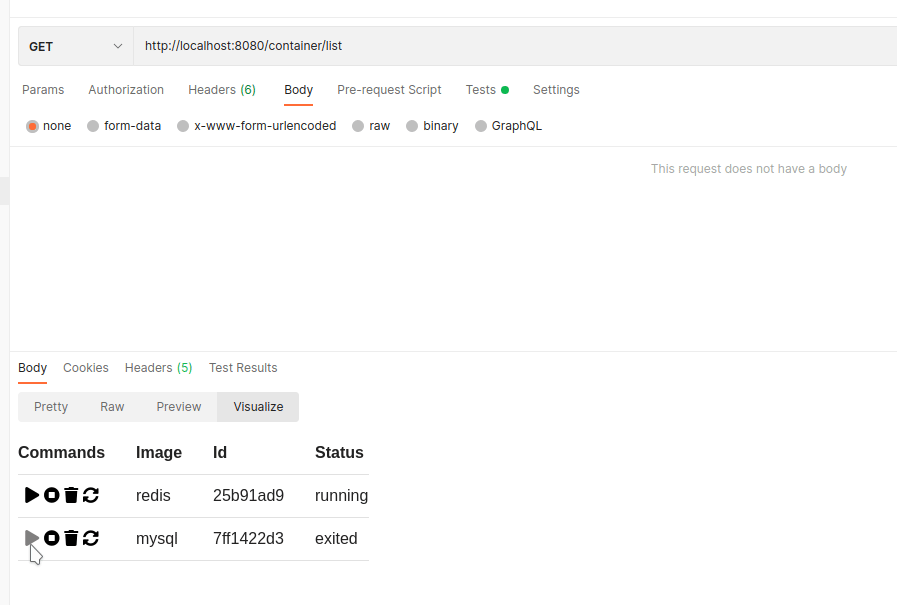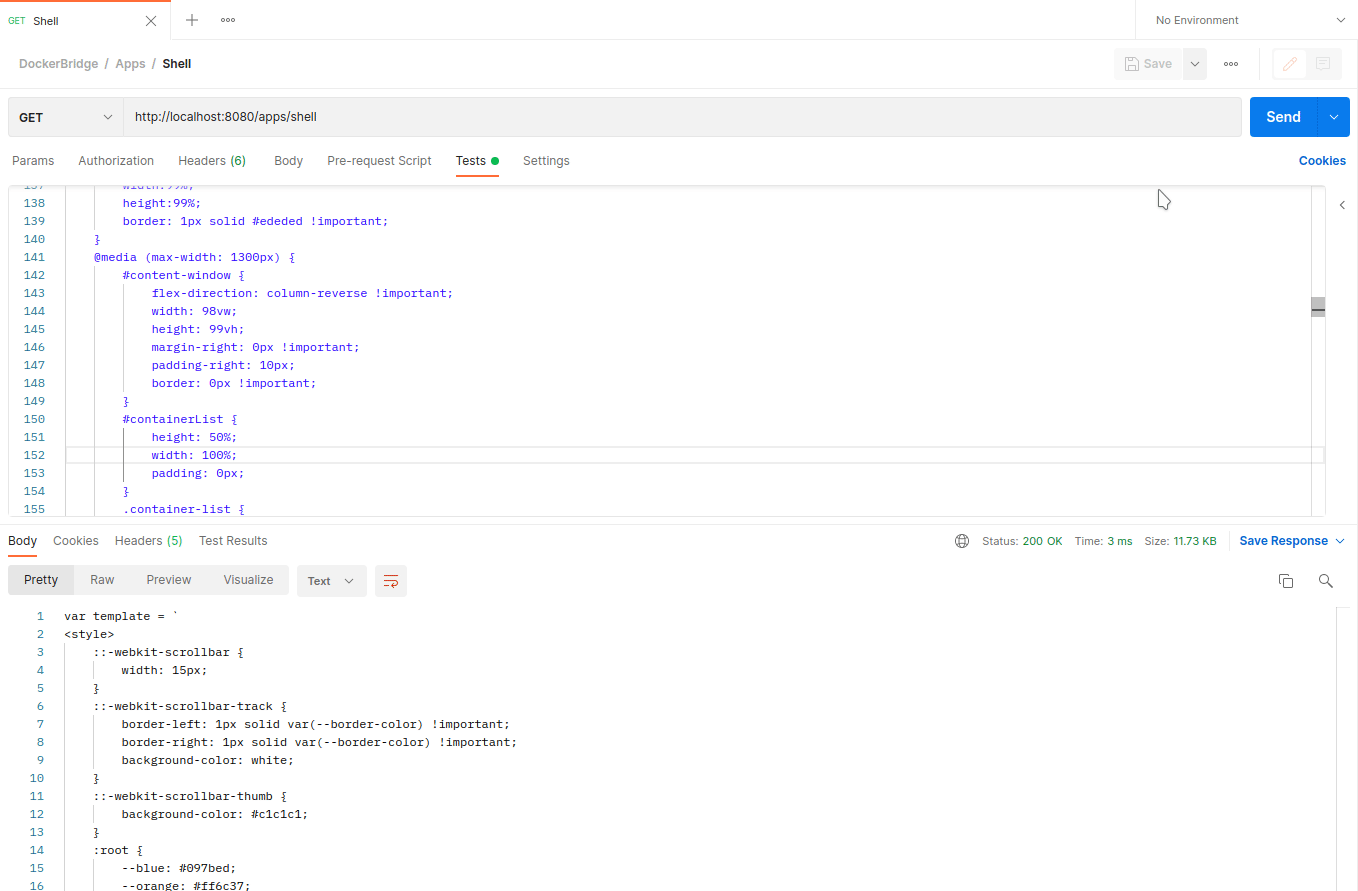This is the ultimate answer to "what should not be done with Postman?"
The answer is simple: running custom Apps in the Postman Visualizer Tab
This bridge allows us to enter docker commands via rest. This itself doesnt sounds that bad good, but in combination with Postman and its JS Sandbox, we can do some insane stuff.
This project uses docker-java and hosts a restapi via spring.io
This repo has an example collection for you to import in postman
Yes, since we have complete access to docker we can just run a (simple) portainer version inside Postman:
Click here for the Test Script Code
var template = `
<link rel="stylesheet" href="https://pro.fontawesome.com/releases/v5.10.0/css/all.css" integrity="sha384-AYmEC3Yw5cVb3ZcuHtOA93w35dYTsvhLPVnYs9eStHfGJvOvKxVfELGroGkvsg+p" crossorigin="anonymous"/>
<style>
i {color: black }
i:hover { color:grey; cursor: pointer; }
i:active { color:black }
</style>
<script>
function docker(containerId, command, newState)
{
var theUrl = 'http://localhost:8080/container/' + containerId + '/' + command;
var xmlHttp = new XMLHttpRequest();
xmlHttp.open( "GET", theUrl, false ); // false for synchronous request
xmlHttp.send(null);
var element = document.getElementById(containerId)
element.textContent = xmlHttp.responseText;
}
</script>
<table bgcolor="#FFFFFF">
<tr>
<th>Commands</th>
<th>Image</th>
<th>Id</th>
<th>Status</th>
</tr>
{{#each containers}}
<tr>
<td style="text-align:center">
<a onclick="docker('{{this.Id}}', 'start')"><i class="fas fa-play"></i></a>
<a onclick="docker('{{this.Id}}', 'stop')"><i class="fas fa-stop-circle"></i></a>
<a onclick="docker('{{this.Id}}', 'remove')"><i class="fas fa-trash"></i></a>
<a onclick="docker('{{this.Id}}', 'restart')"><i class="fas fa-sync-alt"></i></a>
</td>
<td>{{this.Image}}</td>
<td>
<span style="display:inline-block;
white-space: nowrap;
overflow: hidden;
text-overflow: clip;
max-width: 8ch;">
{{this.Id}}
</span>
</td>
<td>
<span id='{{this.Id}}'>{{this.State}}</span>
</td>
</tr>
{{/each}}
</table>
`;
var header = pm.response.json()[0];
var data = pm.response.json().slice(1);
pm.visualizer.set(template, {
containers: pm.response.json(),
ownUrl: pm.request.url.toString()
});
If we can exec via rest, then it shouldnt be an issue to host your own shell. We use 3 Endpoints here:
- 1 Endpoint to download the code (use eval(responseBody) to load the data)
- 1 Endpoint to open the session (exec process)
- 1 Endpoint to write to the session
- add the docker-java dependency to your project
- copy the DockerBridgeController into your project
- (Optional) Import the example PostmanCollection into Postman
- done

